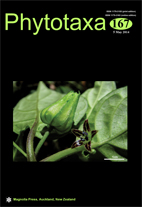Abstract
Faberia is a perennial herbaceous member of Asteraceae that is mainly distributed in central and southwestern China. Nuclear (ITS) and plastid (psbA–trnH, rbcL, matK, and trnL–F) sequences representing five Faberia species were analyzed with maximum parsimony, maximum likelihood, and Bayesian inference, all of which strongly supported the monophyly of Faberia. Faberia nanchuanensis, F. cavaleriei, and F. faberi from central China form a well-supported clade. Additionally, F. sinensis and F. thibetica from southwestern China also form a well-supported clade. Incongruence between nuclear and plastid fragments was interpreted as hybridization or limited character evolution in the plastid DNA. Faberia may have descended from hybridization between Lactucinae and Crepidinae. Besides phylogenetic results, Faberia nanchuanensis is recorded for the first time from Hunan Province, and F. sinensis from the Tibet Autonomous Region.

